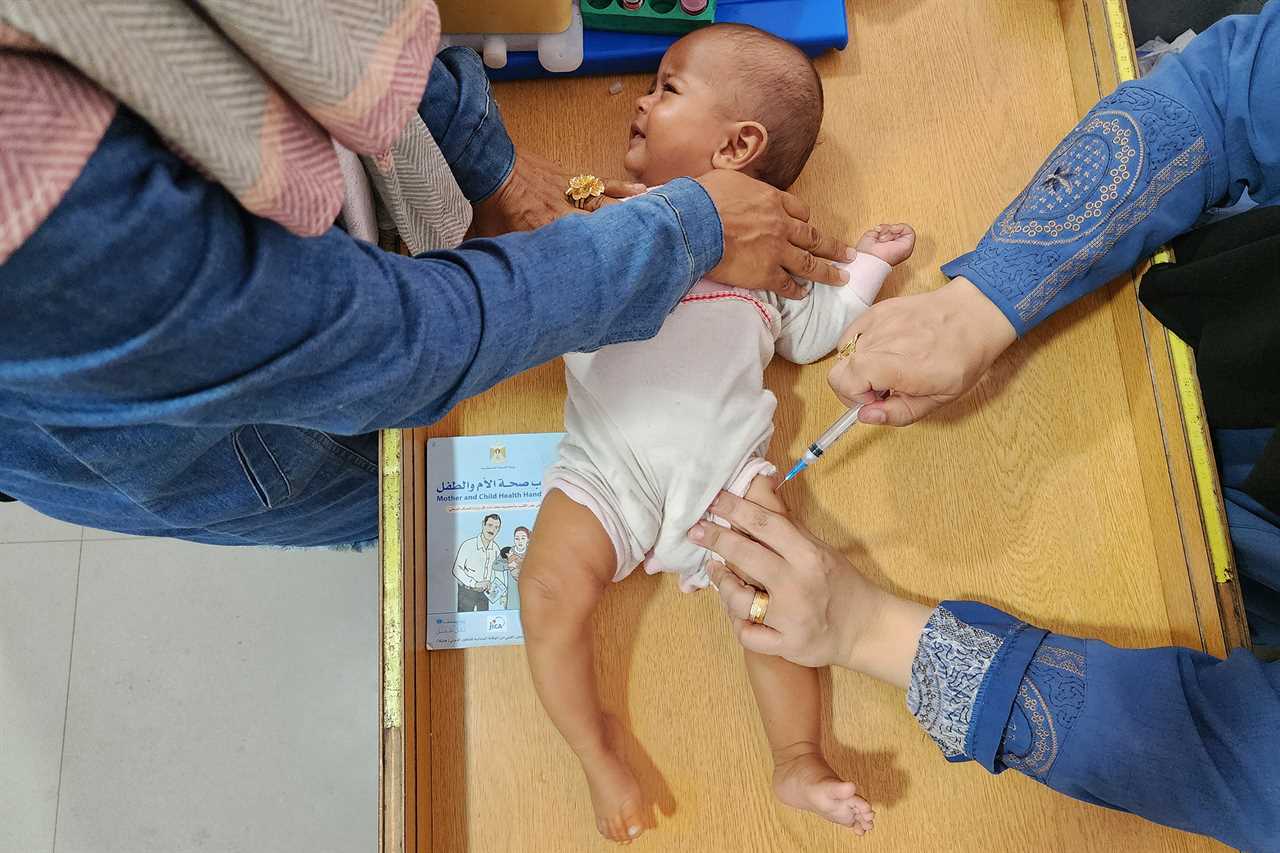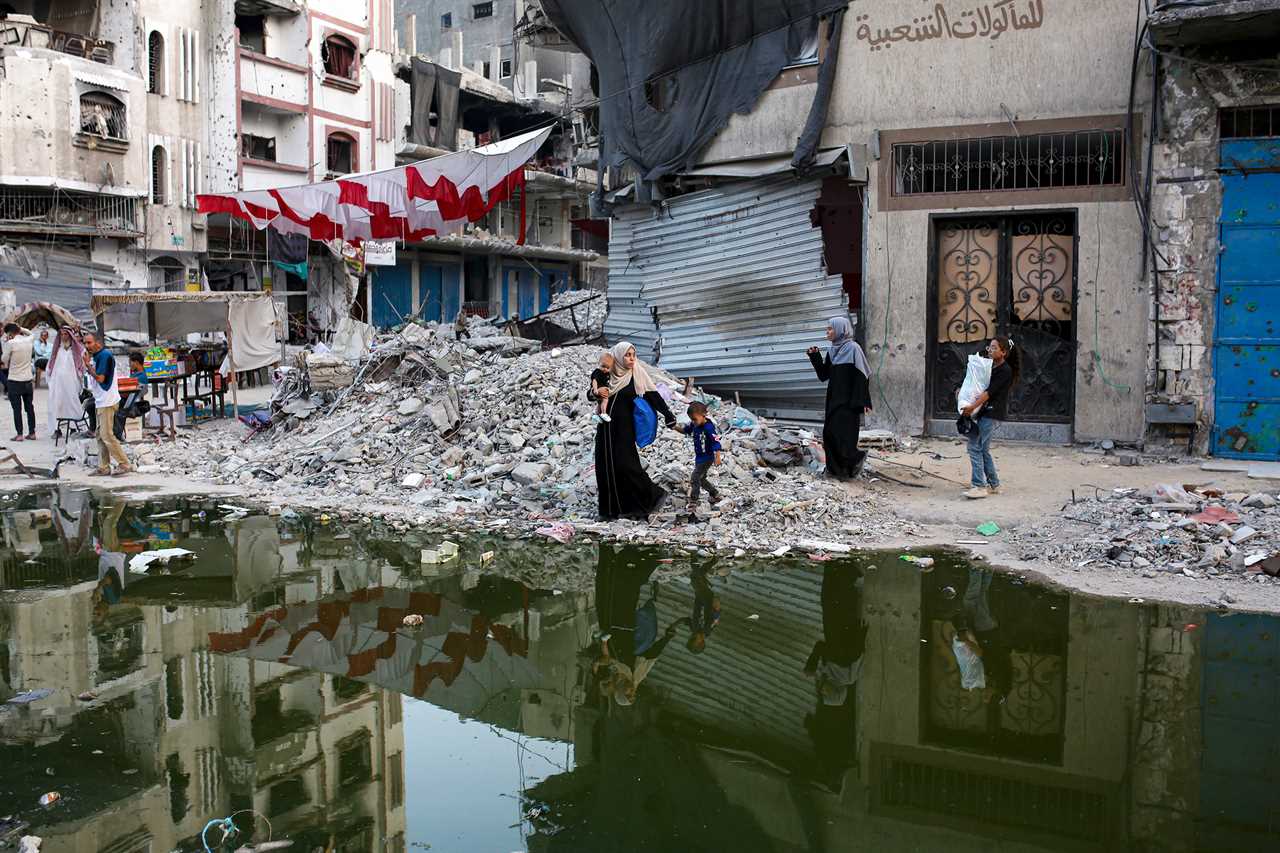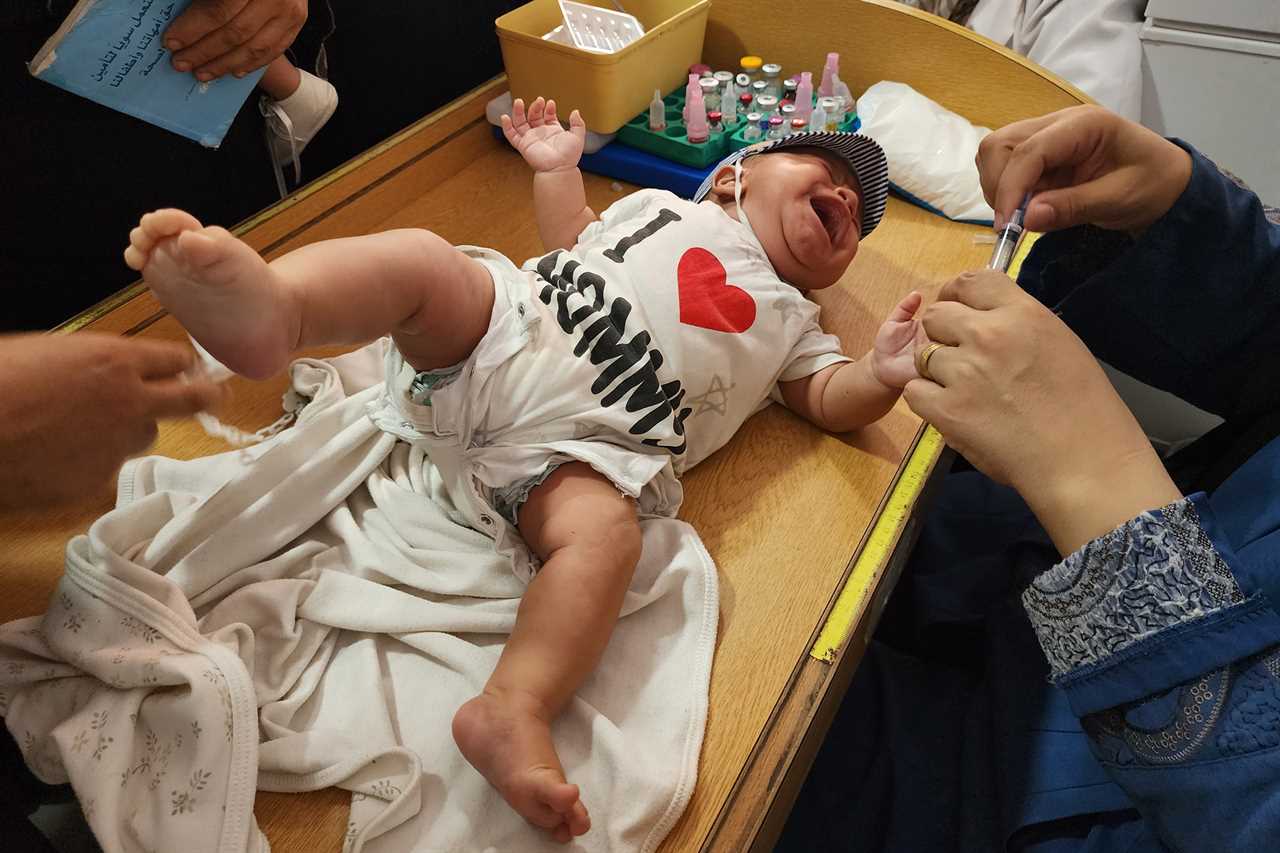---------------------------------------

Polio has resurfaced in Gaza for the first time in 25 years, thriving in the same conditions in which people are dying. The first case was confirmed Friday in a 10-month-old unvaccinated child in Deir al-Balah, the enclave’s health authorities have said; the World Health Organization announced last month that the virus had been initially detected in wastewater in the city. Now, in Gaza, the medical safety of thousands of children depends on the safe delivery of vaccines to the region.
[time-brightcove not-tgx=”true”]
“Just when it seems the situation could not get worse for Palestinians in Gaza, the suffering grows—and the world watches,” said U.N. Secretary General António Guterres in a press statement Friday. “In recent weeks, the poliovirus has been detected in wastewater samples in Khan Younis and Deir al-Balah,” he said.
The reemergence of polio in Gaza did not come as a complete shock, given the situation in the region since the Hamas attacks on Israel last October, during which roughly 1,200 people were killed. More than 40,000 people have been killed in Gaza in the ensuing conflict, according to figures from the Hamas-led Gaza health ministry, which are considered reliable by the U.S. government and the U.N.—and, unsurprisingly, immunization coverage for cVDPV2, or circulating vaccine-derived poliovirus type 2, has dropped at a staggering rate. “Any disease that [can] spread that way will eventually spread,” says Dr. Majed Jaber, a physician from Gaza who spoke to TIME from Al-Mawasi, a town in Khan Younis. “Kind of a Murphy’s law.”
Ancient Egyptian art suggests that polio has existed for thousands of years. In 1840, a German scientist theorized the disease could be contagious. But it took more than 100 years after that for a vaccine to be introduced. After President Franklin Delano Roosevelt, who was diagnosed with polio at 39 and was left partially paralyzed, announced the creation of the National Foundation for Infantile Paralysis in 1938—named after what polio was known as at the time—comedian Eddie Cantor mused, “…Nearly everyone can send in a dime, or several dimes. However, it takes only ten dimes to make a dollar and if a million people send only one dime, the total will be $100,000.” Parents sent in “truckloads” of dimes to the White House, spurring the rebrand of Roosevelt’s foundation to the March of Dimes.

When Jonas Salk, born in 1912 to Russian-Jewish immigrants, licensed the first version of the vaccine in 1955—by which time the virus was killing or paralyzing more than half a million people globally per year—it was meant to be universally accessible. Salk never profited from the formulation or production. When Salk was asked about who owned the vaccine, he said “Well, the people, I would say. There is no patent. Could you patent the sun?”
After the oral poliomyelitis vaccine (OPV) was developed in the late 1950s, the ease of administration made it so that mass vaccination campaigns were more practicable; that form of the vaccine is now more commonly associated with places outside the U.S. Polio has decreased by 99% percent globally since the 1980s, a victory attributed to the launch of the Global Polio Eradication Initiative (GPEI). In the past several decades, the Palestinian vaccination effort was a success story, due in large part to the ease with which parents could take their children to hospitals for scheduled doses. “The occupied Palestinian territory had very high rates of vaccination coverage and that’s why we were quite successful in eliminating polio,” says Dr. Hamid Jafari, Director of Polio Eradication for the WHO Eastern Mediterranean Region. “According to the regular childhood schedule, children in Gaza were getting vaccinated at very high rates.”
National immunization days were carried out in the West Bank and Gaza Strip on a yearly basis from 1995 to 1999, incorporating the more commonly-used OPV. Gaza had been polio-free, according to the U.N., since 1999. Jafari says pre-war vaccination rates were as high as 99%.
The reemergence of polio in Gaza is suspected to have stemmed from the same strain that affected Egypt in late 2023. The virus could have been circulating in victims in Gaza since as early as September last year. Although a vaccine now exists to stop it, the virus can still spread quickly via contact with fecal matter—a problem now exacerbated by the combination of the displacement of masses of Palestinians with the fact that all five of Gaza’s wastewater treatment plants have shut down, according to the U.N., causing runoff to flow openly into the streets. “Keep in mind, polio spreads in already dismissed areas—areas without any access to the slightest aid,” Jaber says.
Read More: The Infants Among the War Dead
Indeed, the ease of administering both the inactivated polio vaccine (IPV) and OPV does not mean that vaccination efforts are necessarily easy—and the situation in Gaza serves to magnify that difficulty.
Of the 36 hospitals in Gaza, only 16 are partially functioning today. Of the 107 primary health care facilities, fewer than half are still operating, Jafari says. The vaccines themselves must be stored at optimal temperature to remain effective, and are linked to refrigeration equipment, which requires steady electricity that Gaza lacks. The trucks that carry the vaccines and equipment also require fuel— a resource Israel has blocked from entering Gaza. Even basic hygiene practices that deter the spread of infectious diseases like polio are difficult. In Gaza, “the Israelis have been strict with access to hygiene products, including soap, toilet wraps, cleaning products, and towels,” says Jaber, the doctor in Khan Younis. “They have turned [them] into luxury products most cannot afford.”
The virus’s presentation is also a risk in and of itself, as it can mask the disease under common symptoms. “[They] typically include symptoms of a stomach flu—like nausea, vomiting and diarrhea,” says Dr. Michael K. Wroten, who runs a clinic for polio survivors at Medstar National Rehabilitation Hospital in Washington, D.C. Children in Gaza were already experiencing the spread of other infectious diseases. The spread of illnesses of all types makes it difficult to discern the root cause of such symptoms. “It is a headache to even start thinking about polio,” echoes Jaber, between working in clinics in Gaza. “We doctors lack the facilities to manage a child with diarrhea. Now we have to worry about this.” (The long-term effects of polio, such as paralysis, are also particularly difficult to cope with in places lacking infrastructure, which entails inaccessibility for people with disabilities, both physically and professionally. “These factors can put significant emotional and financial strain on individuals with polio, their families and communities,” says Wroten, “especially during times of conflict where resources are already sparse.”)
A U.N. vaccination campaign aims to send out 708 teams to hospitals in Gaza—most of which are hardly operational. But the logistics are daunting. At least two rounds of vaccinations are planned to treat all children in Gaza under the age of 10. This comes as two more cases of acute flaccid paralysis, a symptom of polio, were confirmed in the region as of Tuesday, in a 5-year-old and 10-year-old. According to Jafari, the GPEI plans to implement the use of novel oral polio vaccine type 2 (nOPV2), a modified version of the vaccine used in Gaza in the past, which is more sustainable in emergency conditions.
“Without appropriate interventions, such as vaccination campaigns,” says Wroten, “there could be widespread outbreaks of polio within a matter of months.”

But while the U.N. has requested a “Polio Pause” in fighting in order to conduct its campaign, several people familiar with the situation argue that combating the virus in Gaza requires a true ceasefire. “In terms of implementing these polio vaccination campaigns, there should be peace,” says Jafari. “…and if peace cannot be obtained, if ceasefire cannot be implemented, at least periods of tranquility… should be very clear so that the program can very clearly announce to these communities when it is safe to come out and bring their children for vaccination.”
Read More: Britain’s New Government Comes Under Pressure to Pivot on Gaza
“We all want to be hopeful,” says Dr. Susan Kullab, an infectious disease specialist who volunteered in Gaza in May with the Palestinian American Medical Association and the Jordanian American Physicians Association, who notes that health workers there don’t have reliable internet access in order to communicate with one another. “But the reality is that without ceasefire this is very challenging. Even if [the vaccines] do get in, how are they going to ensure that children get it?”
Edward Ahmed Mitchell, Deputy Director of the Council on American-Islamic Relations, puts the argument in stronger terms: “No vaccine campaign is going to succeed while the population is actively experiencing a genocidal bombing campaign.” The U.N.’s plan to send out vaccinations, he notes, won’t work without collaboration with both Israel and Hamas.
The resurgence of polio in Gaza after 25 years highlights the dire consequences of war on public health. “A ceasefire is the only way to ensure public health security in the Gaza Strip and the region,” said the WHO, in a statement Friday. As history has shown, polio is a formidable adversary, and the futures of countless children in Gaza remain in peril.
-----------------------------------------
By: Juwayriah Wright
Title: Gaza’s Doctors Face a New Battle: The War on Polio
Sourced From: time.com/7014075/gaza-polio-outbreak-history-vaccination-campaign/
Published Date: Fri, 23 Aug 2024 15:32:32 +0000
Read More
 General Health and WellnessFitness and ExerciseSupplements and VitaminsPandemic NewsVideosPrivacy PolicyTerms And Conditions
General Health and WellnessFitness and ExerciseSupplements and VitaminsPandemic NewsVideosPrivacy PolicyTerms And Conditions
